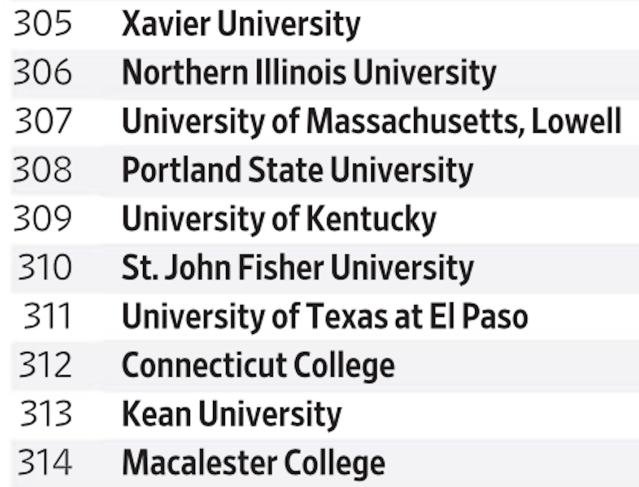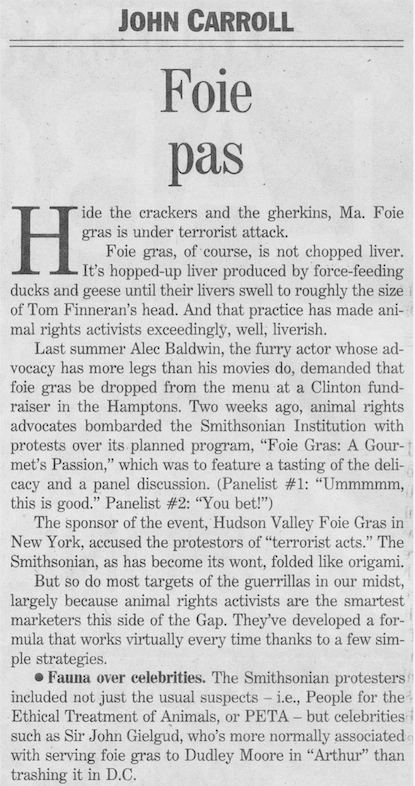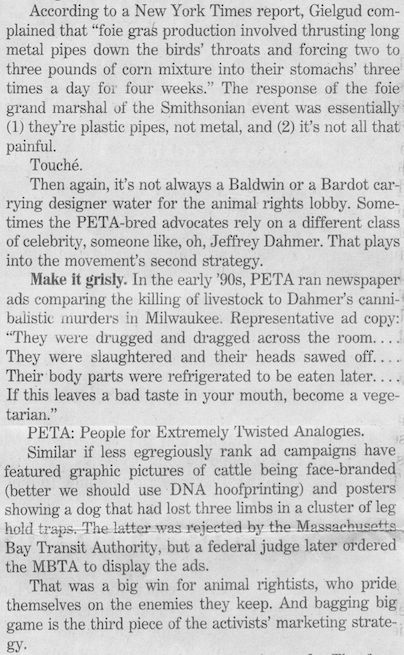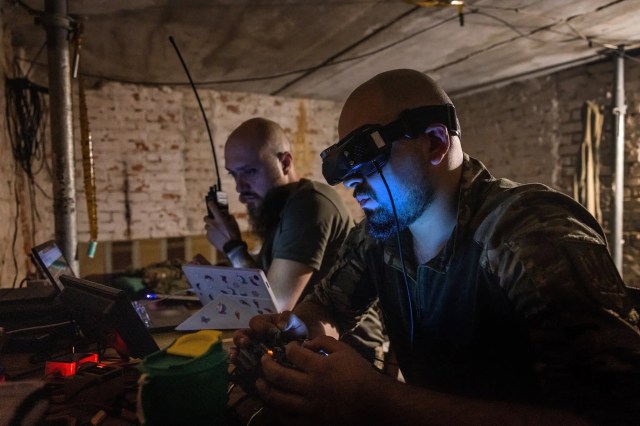From our That’s Just So Sad desk
Here at the Global Worldwide Headquarters, the hardtsking staff has long lamented the slow-motion decline of what used to be called “clear idiomatic English.” Unclear idiotmatic English is more like it nowadays.
For one thing, when did single and singular become interchangeable, instead of retaining their discrete (not discreet) meanings. Also, why are people out of nowhere saying all the sudden instead of all of a sudden. Likewise, why in the world has even still replaced even so, or even still?
In addition, I’m opposed to the increasing use of vers (rhymes with “verse”) vs. versus. Beyond that, as much as I’m disinclined to speak about reluctant being replaced by reticent, I can hold my tongue no longer about it.
All the while, the March of the Mangled Phrases has been proceeding apace. Let’s start by unearthing a few examples of mixed-up messages patiently gathering dust in the heavily guarded Campaign Outsider Vault. (Apologies in advance: Links have been lost in the mists of time.)
For starters, let’s set the Wayback Machine to 2019 . . .
• In January Michigan Democratic Rep. Rashida Talib told a cheering crowd “we’re going to impeach the motherf****r” – that is, Donald Trump – concerning which Politico Playbook noted, “there will be no repercussions. Zero. Criticisms are met by scuffaws, since there’s so much vulgar language everywhere – even the White House.”
Scuffaws? If that’s a combination of guffaws and scofflaws, then sure – it pretty much nails D.C. for the past six years.
• The following month, on The Daily podcast from the New York Times, someone said this about Donald Trump trying to avoid a second government shutdown during his first term: “The president is ready to eat his lumps.”
It’s more common for someone to take his lumps, of course, but that rarely happens in Trumpa Lumpaland.
• Several months later, a Politico Playbook item about editorial changes at the mother ship provided this financial update: “Revenue is up 50 percent, and the company is cooking with grease, on both the journalistic and business fronts.”
Since the 1940s, it’s been far more normal – and presumably safer – to be cooking with gas (“the phrase originated in the 1940s as a marketing slogan from the natural gas industry to promote the superiority of gas stoves over electric ones. It was popularized by comedians like Bob Hope and Jack Benny on radio shows”) – but hey, whatever sparks your pilot light, yeah?
• Not long after that, in a Wall Street Journal column spanking Mark Zuckerberg for Facebook’s “monopolistic nature, slippery ethics and algorithmic threats to serious journalism,” Peggy (Queen of the Comma Splice) Noonan opined that Beltway politicians were easy pickin’s for Silicon Valley bros: “A tech god will give them some attention, some respect, and they’ll fold like a cheap suit.”
 (To be sure graf goes here)
(To be sure graf goes here)
To be sure, just about everyone slots cheap suit into the “folds like a cheap X” matrix. But let’s be honest: A cheap suit doesn’t fold that much easier than a costly one. So we’re here to say that folds like origami should be the universally accepted phrase and we will soon implore Merriam-Webster to declare it so.
• Over the next few months, there was no use getting excited over Politico Morning Score’s “waiting on bated breath” or getting angry about this in Brian Stelter’s Reliable Sources newsletter: “John Bolton is not going quietly into that dark night.” While Dylan Thomas might have spun in his grave and raged against the dying of his verse at the time, we should add that John Bolton is right now finding out what dark really is.
• On his Cafe Insider podcast in November of ’19, Preet Bharara commented thusly on Gordon Sondland (former U.S. Ambassador to the European Union and subsequent wholly owned subsidiary of Donald J. Trump): “He’s in over his ski tips.”
Early in 2020, North Dakota Sen. Kevin Cramer urged caution about House Speaker Nancy Pelosi’s proposed infrastructure bill: “What I don’t want to do is get out ahead of our skis and start making massive policy changes that reflect political extremes.”
Let’s straighten up and fly right, people. You can either get out over your skis, or get in over your head.
Or maybe sometimes both.

More recently . . .
• Several months ago, Politico Playbook PM led with this item: “WRATH OF TARIFFS: President Donald Trump took two birds with one stone today, making good on his threat to crack down on Russia and dropping an economic hammer on India.”
Took two birds with one stone? Sounds like a rotisserie chicken order to go. (Stone sold separately.)
• A few days later Playbook’s daytime edition chronicled the Trump administration’s view that mainlining National Guard troops into American cities was a political winner since crime “is still an issue on which Democrats find themselves on the back heel.”
Uh . . . no? You can be back on your heels or on the back foot, but you need to be on your toes to keep them straight.
• During a piece by Meghan McCarty Carino on APM’s Marketplace last month about prediction markets tiptoeing toward sports betting, Daniel Wallach, an attorney specializing in sports gaming. contributed this analysis: “You know what they say — if it looks like a duck, talks like a duck, walks like a duck, it’s a duck.”
Let’s stipulate, as the lawyers like to say, that Daffy, Donald, Howard, and – maybe – the Aflac duck do indeed talk. But the vast majority of other mallards tend to quack like a duck, which is really the way you know what they are.
We’ll wrap up with a trifecta from The Bulwark, the best $100 you can spend on a news source, assuming your political proclivities fall somewhere between Steve Bannon and Bernie Sanders on the ideological spectrum. (There’s also lots of free content for those who might be cash-strapped – as opposed to the wholly misguided cash poor, a nonsensical spinoff of house poor) . . .
• On one of his Sunday podcasts last month, Bulwark editor at large Bill Kristol talked to counterterrorism expert Tom Joscelyn about the Trump administration’s spin on military incursions into American cities.
“They’re trying to claim the moral high ground when it comes to political violence,” Joscelyn said. “So they’re out there with J.D. Vance or Stephen Miller or Kristi Noem or the president himself or various other people in the administration claiming that the left is the one that’s fomenting political violence and their hands are supposedly scot-free.”
Given the parlous nature of our current political climate, we’ll just note that one can have clean hands or – on the other hand – get off scot-free. And leave it at that.
• The other week in a Bulwark Takes video about Donald Trump’s promised elimination of governmental wastefraudandabuse, the estimable Tim Miller said, “Supposedly Trump was going to come in. Doge was going to run havoc over the DOD . . .”
Not to get technical about it, but one wreaks havoc on stuff or runs roughshod over it.
(To be fair graf goes here)
To be fair, Tim Miller is what’s known in baseball terms as a hoss, a guy who chews up innings like sunflower seeds. In his case, he cranks out content in otherworldly quantities, talking on camera for umpteen hours a week, so no disrespect whatsoever intended.
• Miller’s Bulwark colleague, editor Jonathan V. Last, provides us with a hopeful note on the way out. During his latest Secret Podcast with running buddy Sarah Longwell, during which they talked about the Maine Democratic Senate primary between oysterman/Nazi-adjacent-tattooed Graham Platner and incumbent governor/septuagenarian Janet Mills, JVL said this.
You know, you, you can say . . . I think that there’s a better chance of beating, uh, [GOP Sen. Susan] Collins with a young dynamic guy. Um, And the baggage doesn’t matter. But nobody really knows until we get there. The proof is in the eating, right?
That’s exactly right! The proof of the pudding is in the eating – not in the pudding.
For once, the hardtsking staff is actually kvelling.




































